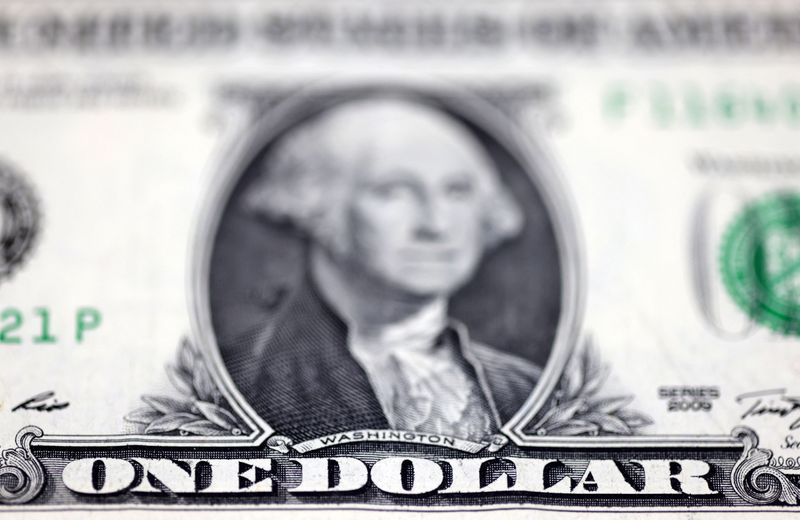Investing.com – The U.S. dollar stabilized in early European hours Tuesday in holiday-impacted trade, while the Aussie dollar retreated after the Reserve Bank held rates steady at its latest policy-setting meeting.
At 03:00 ET (07:00 GMT), the , which tracks the greenback against a basket of six other currencies, traded marginally lower at 102.612.
Dollar stuck in tight holiday-affected ranges
The dollar is likely to trade in tight ranges Tuesday with U.S. markets closed as the country celebrates Independence Day, especially as the week ends with key which could influence the next move by the Federal Reserve.
The greenback weakened on Monday, following the release of disappointing manufacturing data, with the Institute for Supply Management’s dropping to 46.0 from 46.9 in May, the lowest reading since May 2020.
The ISM survey was consistent with an economy in recession, but this may still not be enough to stop the Fed from restarting its tightening cycle later this month if Friday’s official employment report indicates that the labor market remains healthy given inflation is still above target.
RBA stands pat but doesn’t rule out more hikes
rose 0.1% to 0.6678 after the maintained its cash rate at an 11-year high of 4.10%, saying it wanted more time to assess the impact of the 400 basis points of hikes since May last year.
Still, the central bank reiterated its warning that further tightening might be needed as “inflation is still too high and will remain so for some time yet.”
German exports fall in May
traded largely unchanged at 1.0910, even as fell in May, suggesting a difficult trading environment for Europe’s manufacturing powerhouse.
However, the is likely to continue its historic series of interest rate increases, with another hike later this month likely.
“The way I see it, we still have some way to go,” Governing Council member Joachim Nagel, who is president of Germany’s Bundesbank, said in a speech in Frankfurt on Monday.
Elsewhere, rose 0.1% to 1.2705, with the also likely to continue hiking interest rates as the country’s remained at 8.7% in May, the highest of any major advanced economy.
fell 0.2% to 144.39, with the yen hovering just around seven-month lows as markets continued to watch for any potential intervention by the government in currency markets.
Finance Minister Shun’ichi Suzuki said on Friday Japan would take appropriate steps in response to excessive yen weakening.
Read the full article here










